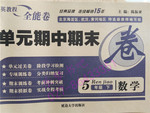题目内容
阅读理解
Early rising is helpful in more than one way. We all need fresh (新鲜的) air. But air is never so fresh as early in the morning. Besides, it is useful to do morning exercises.
Secondly, early rising helps us in our studies. In the morning we team more quickly and find it easier to understand what we learn.
Thirdly, early rising can give a plan to our work for the day. We can not work well without a good plan.
Fourthly, early rising gives us enough time to get ready for our work, such as to wash our hands and faces and eat our breakfast.
Late risers may find it very difficult to form (形成) the habit of early rising. They have to make an effort (努力) to do so. As the English proverb (谚语) says “Early to bed and early to rise makes a man healthy, wealthy (富有) and wise.”
(1) Air is fresh ________.
[ ]
A.early in the morning
B.at the time when you get up
C.when you are sleeping
D.late at night
(2) Doing morning exercises ________.
[ ]
A.help us to memorize what we learn
B.is good to our health
C.gives us enough time to study
D.make us tired and sleepy
(3) We can't work well ________.
[ ]
A. if the weather is bad
B.if we get up early
C.if we have not a good plan
D.in summer, autumn, winter
(4) Early rising gives us enough time ________.
[ ]
A.to get ready for our work
B.to wash our faces
C.to brush our teeth
D.to eat breakfast
(5) Late risers should try their best ________.
[ ]
A.to form the good habit of early rising
B.to remember some English proverbs
C.to sleep as many hours as possible
D.to get up earlier than everyone else

 核心素养学练评系列答案
核心素养学练评系列答案 单元期中期末卷系列答案
单元期中期末卷系列答案
| |||||||||||||||||||||||||||||||||||||||||||||
| |||||||||||||||||||||||||||||||||||||||||||||||||||||||||||